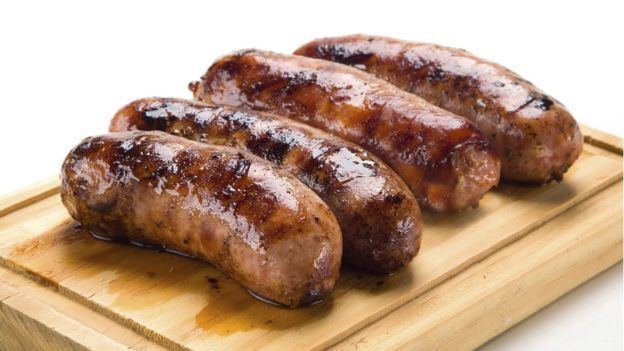 | ||
Similar Red meat, Bologna sausage, Lunch meat, Potted meat, Embutido | ||
What exactly is processed meat
Processed meat is considered to be any meat which has been modified in order to either improve its taste or extend its shelf life. Methods of meat processing include salting, curing, fermentation, and smoking. Processed meat is usually composed of pork or beef, but also poultry, while it can also contain offal or meat by-products such as blood. Processed meat products include bacon, ham, hotdogs, sausages, salami, corned beef, beef jerky, canned meat and meat-based sauces. Meat processing includes all the processes that change fresh meat with the exception of simple mechanical processes such as cutting, grinding or mixing.
Contents

IARC at the World Health Organization classifies processed meat as a Group 1, carcinogenic to humans, since it has found sufficient evidence that consumption of processed meat by humans causes colorectal cancer. The North American Meat Institute, a meat industry trade association, states that this IARC monograph defies both common sense and numerous studies showing no correlation between meat and cancer and many more studies showing the many health benefits of balanced diets that include meat.

A 2016 report by the American Institute for Cancer Research and the World Cancer Research Fund found that processed meat consumption increased the risk of stomach cancer. A 2012 paper by Bryan et. al. identified H. pylori as a potential causative agent that warranted further study.

Meat processing began as soon as people realized that cooking and salting prolongs the life of fresh meat. It is not known when this took place, however, the process of salting and sun-drying was recorded in Ancient Egypt, while using ice and snow is credited to early Romans, while canning was developed by Nicolas Appert who received in 1810 a prize for his invention from the French government.
The preservative sodium nitrite (E250) (mixed into curing-salt) is well known for its role in inhibiting the growth of clostridium botulinum bacteria spores in processed and refrigerated meats. A principal concern about sodium nitrite is the formation of carcinogenic nitrosamines in meats containing sodium nitrite when meat is charred or overcooked. Such carcinogenic nitrosamines can also be formed from the reaction of nitrite with secondary amines under acidic conditions (such as occurs in the human stomach) as well as during the curing process used to preserve meats.
Nitrate and nitrite are consumed from plant foods as well as animal foods, with 80% of a typical person's nitrate consumption coming from vegetables, especially leafy and root vegetables such as spinach and beets. Some nitrate is converted to nitrite in the human body. Nitrite is generally recognized as safe by the U.S. Food and Drug Administration.
